Video Monitoring Application of CMOS 4T-PPD-APS Under γ-ray Radiation
Abstract
1. Introduction
2. Experiments
2.1. Initial Parameters of Image Sensors
2.2. 137Cs Source Experimental Setup
2.3. 60Co Source Experimental Setup
2.4. Data Processing Methods
3. Discussion of Data Processing and Results
3.1. Radiation Resistance
3.2. Radiation Response
4. Conclusions
Author Contributions
Funding
Acknowledgments
Conflicts of Interest
References
- Wang, X.X.; Zhang, P.Z.; Liu, X.J. Calculation and Analysis for the Radiation Condition in the Containment of PWR after Severe Accident. Nucl. Sci. Eng. 2013, 33, 53–57. [Google Scholar]
- Zeng, J.; Liang, Z.; Liu, S.H.; Wang, Y.; Zhai, L. γ Radiation Level Simulation and Analysis with MCNP in EPR Containment During Severe Accident. At. Energy Sci. Technol. 2013, 47, 789–793. [Google Scholar]
- Xu, S.L.; Zou, S.L.; Huang, Y.J.; Song, L.Y. Availability Evaluation and Improvement Plan of Image Sensors in Accident of Nuclear Power Plant. Nucl. Electron. Detect. Technol. 2016, 36, 651–655. [Google Scholar]
- Xu, S.L.; Zou, S.L.; Wu, Z.; Luo, Z.; Huang, Y.; Song, L. Research on Availability of CIS Digital Module as Monitoring and Radiation Alarm Equipment under Condition of Nuclear Accidents. Nucl. Power Eng. 2017, 38, 88–94. [Google Scholar]
- Xu, S.L.; Zou, S.L. Video monitoring system availability in radiation accident condition. In Proceedings of the 24th International Conference on Nuclear Engineering, Charlotte, NC, USA, 26–30 June 2016; American Society of Mechanical Engineers: New York, NY, USA, 2016. [Google Scholar]
- Xu, S.L.; Zou, S.L.; Huang, Y.J. Effect of γ-ray Ionizing Radiation on CMOS Active Pixel Sensor. Chin. J. Lumin. 2017, 38, 308–315. [Google Scholar]
- Xu, S.L.; Zou, S.L.; Huang, Y.J. γ-ray Detection Using Commercial Off-The-Shelf CMOS and CCD Image Sensors. IEEE Sens. J. 2017, 17, 6599–6604. [Google Scholar]
- Náfrádi, G.; Czifrus, S.; Kocsis, G.; Pór, G.; Szepesi, T.; Zoletnik, S. Analysis of dark current images of a CMOS camera during gamma irradiation. Fusion Eng. Des. 2013, 88, 3169–3175. [Google Scholar] [CrossRef]
- Cohen, M.; David, J.P. Radiation-induced dark current in CMOS active pixel sensors. IEEE Trans. Nucl. Sci. 2000, 47, 2485–2491. [Google Scholar] [CrossRef]
- Goiffon, V.; Estribeau, M.; Magnan, P. Overview of Ionizing Radiation Effects in Image Sensors Fabricated in a Deep-Submicrometer CMOS Imaging Technology. IEEE Trans. Electron Devices 2009, 56, 2594–2601. [Google Scholar] [CrossRef]
- Goiffon, V.; Virmontois, C.; Magnan, P.; Cervantes, P.; Corbiere, F.; Estribeau, M.; Pinel, P. Radiation damages in CMOS image sensors: testing and hardening challenges brought by deep sub-micrometer CIS processes. In Proceedings of the SPIE Remote Sensing, Toulouse, France, 13 October 2010; Volume 7826, p. 78261S. [Google Scholar]
- Virmontois, C.; Goiffon, V.; Magnan, P.; Saint-Pe, O.; Girard, S.; Petit, S.; Rolland, G.; Bardoux, A. Total Ionizing Dose Versus Displacement Damage Dose Induced Dark Current Random Telegraph Signals in CMOS Image Sensors. IEEE Trans. Nucl. Sci. 2011, 58, 3085–3094. [Google Scholar] [CrossRef]
- Goiffon, V.; Virmontois, C.; Magnan, P. Investigation of Dark Current Random Telegraph Signal in Pinned PhotoDiode CMOS Image Sensors. In Proceedings of the International Electron Devices Meeting (IEDM), Washington, DC, USA, 5–7 December 2011; pp. 8.4.1–8.4.4. [Google Scholar]
- Goiffon, V.; Virmontois, C.; Magnan, P.; Cervantes, P.; Place, S.; Gaillardin, M.; Girard, S.; Paillet, P.; Estribeau, M.; Martin-Gonthier, P. Identification of Radiation Induced Dark Current Sources in Pinned Photodiode CMOS Image Sensors. IEEE Trans. Nucl. Sci. 2012, 59, 918–926. [Google Scholar] [CrossRef]
- Place, S.; Carrere, J.P.; Magnan, P.; Goiffon, V.; Roy, F. Radiation effects on CMOS image sensors with sub-2 µm pinned photodiodes. In Proceedings of the IEEE European Conference on Radiation and ITS Effects on Components and Systems, Sevilla, Spain, 19–23 September 2012; pp. 314–320. [Google Scholar]
- Goiffon, V.; Cervantes, P.; Virmontois, C.; Corbiere, F.; Magnan, P.; Estribeau, M. Generic Radiation Hardened Photodiode Layouts for Deep Submicron CMOS Image Sensor Processes. IEEE Trans. Nucl. Sci. 2011, 58, 3076–3084. [Google Scholar] [CrossRef]
- Goiffon, V.; Estribeau, M.; Marcelot, O.; Cervantes, P.; Magnan, P.; Gaillardin, M.; Virmontois, C.; Martin-Gonthier, P.; Molina, R.; Corbiere, F.; et al. Radiation Effects in Pinned Photodiode CMOS Image Sensors: Pixel Performance Degradation Due to Total Ionizing Dose. IEEE Trans. Nucl. Sci. 2013, 59, 2878–2887. [Google Scholar] [CrossRef]
- Martin-Gonthier, P.; Goiffon, V.; Magnan, P. In-Pixel Source Follower Transistor RTS Noise Behavior Under Ionizing Radiation in CMOS Image Sensors. IEEE Trans. Electron Devices 2012, 59, 1686–1692. [Google Scholar] [CrossRef][Green Version]
- Hopkinson, G.R.; Goiffon, V.; Mohammadzadeh, A. Random Telegraph Signals in Proton Irradiated CCDS and APS. IEEE Trans. Nucl. Sci. 2008, 55, 2197–2204. [Google Scholar] [CrossRef]
- Virmontois, C.; Goiffon, V.; Robbins, M.S.; Tauziède, L.; Geoffray, H.; Raine, M.; Girard, S.; Gilard, O.; Magnan, P.; Bardoux, A.; et al. Dark Current Random Telegraph Signals in Solid-State Image Sensors. IEEE Trans. Nucl. Sci. 2013, 60, 4323–4331. [Google Scholar] [CrossRef]
- Xu, S.L.; Zou, S.L.; Wu, Z.; Luo, Z.P.; Huang, Y.J.; Cai, X.M. Comparative Study on Ionizing Radiation Damage of Different Types of Image Sensor Modules. At. Energy Sci. Technol. 2016, 50, 2092–2100. [Google Scholar]
- Xu, S.L.; Zou, S.L. Total-ionizing-dose effects in pixel performance degradation of CMOS image sensors under low dose rate. In Proceedings of the 23rd International Conference on Nuclear Engineering: Nuclear Power—Reliable Global Energy, Chiba, Japan, 17–20 May 2015; American Society of Mechanical Engineers: New York, NY, USA, 2015. [Google Scholar]
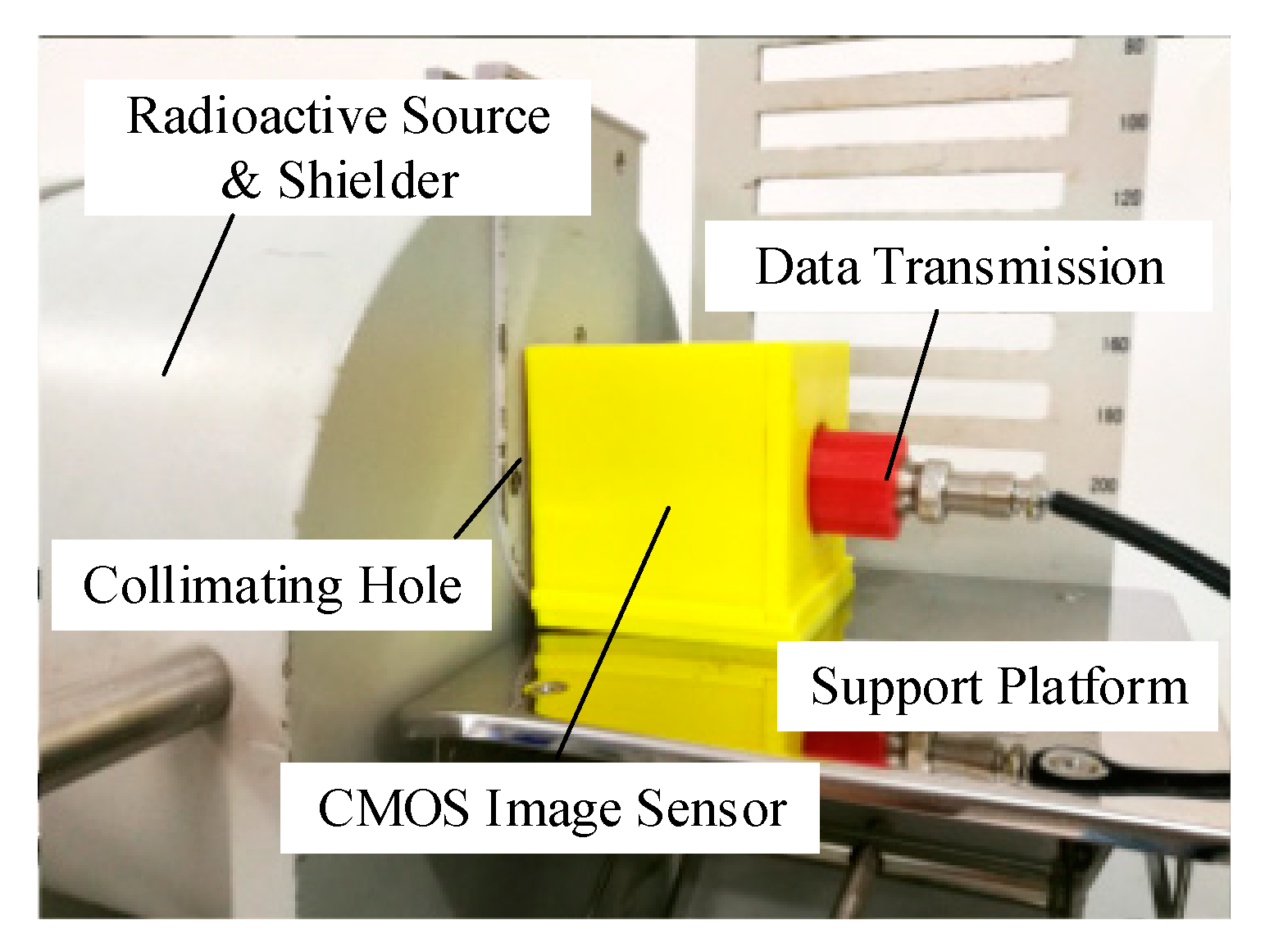
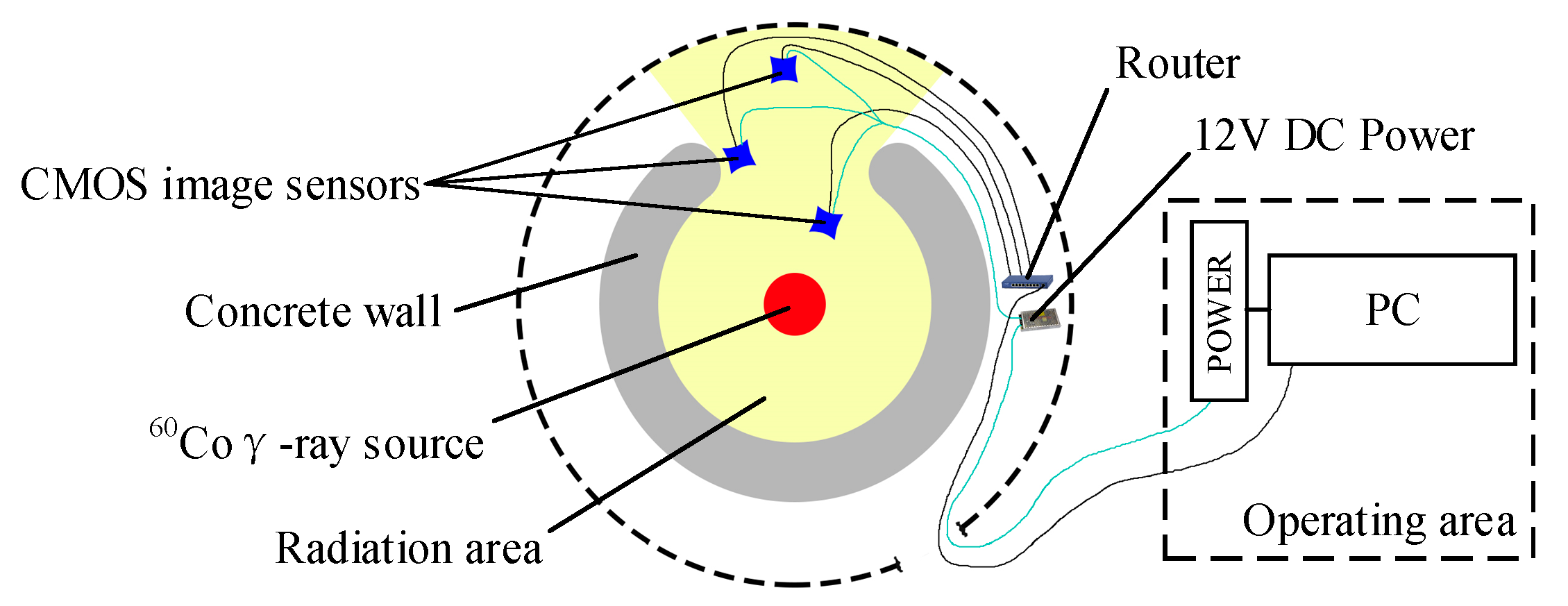
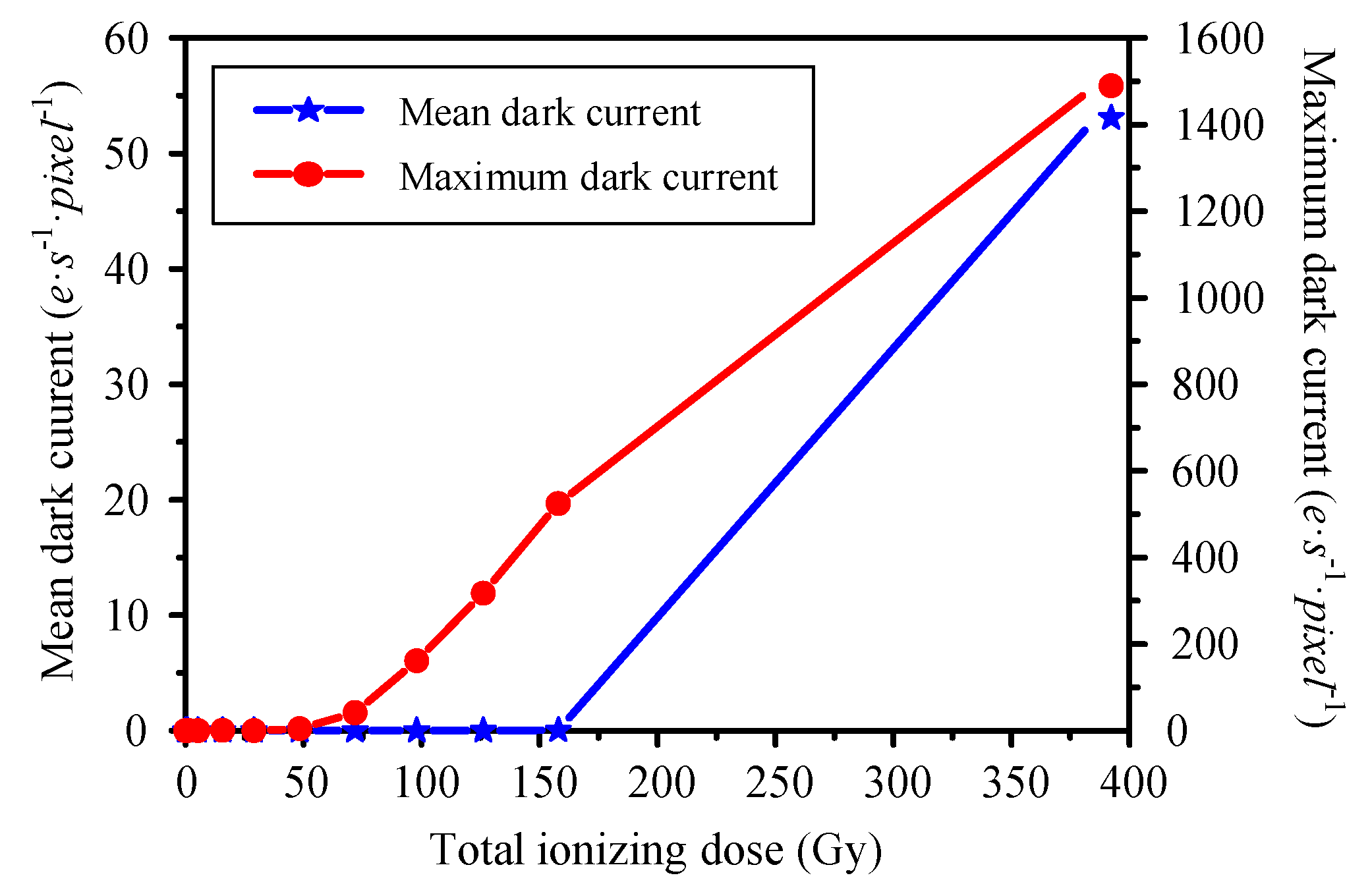
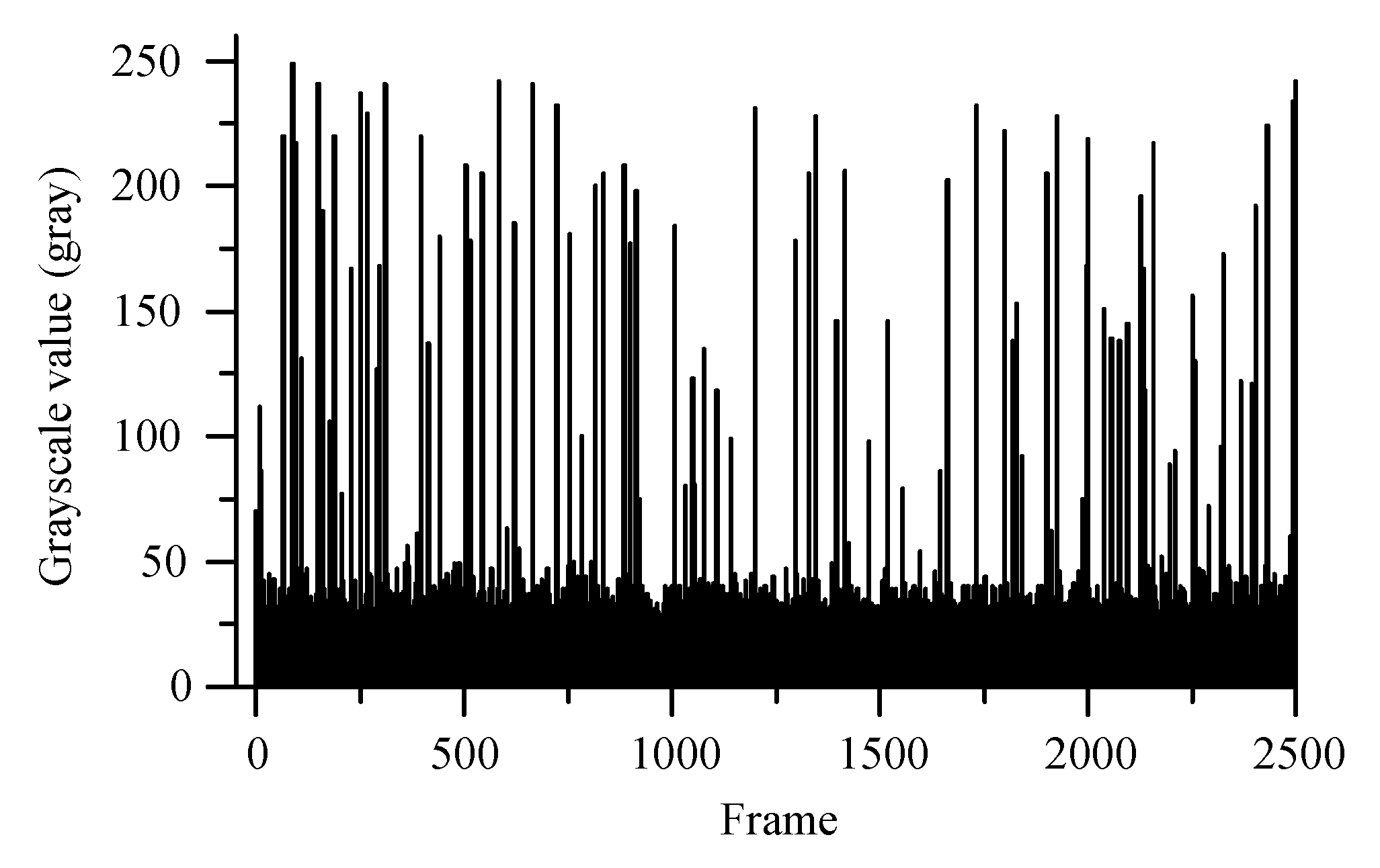
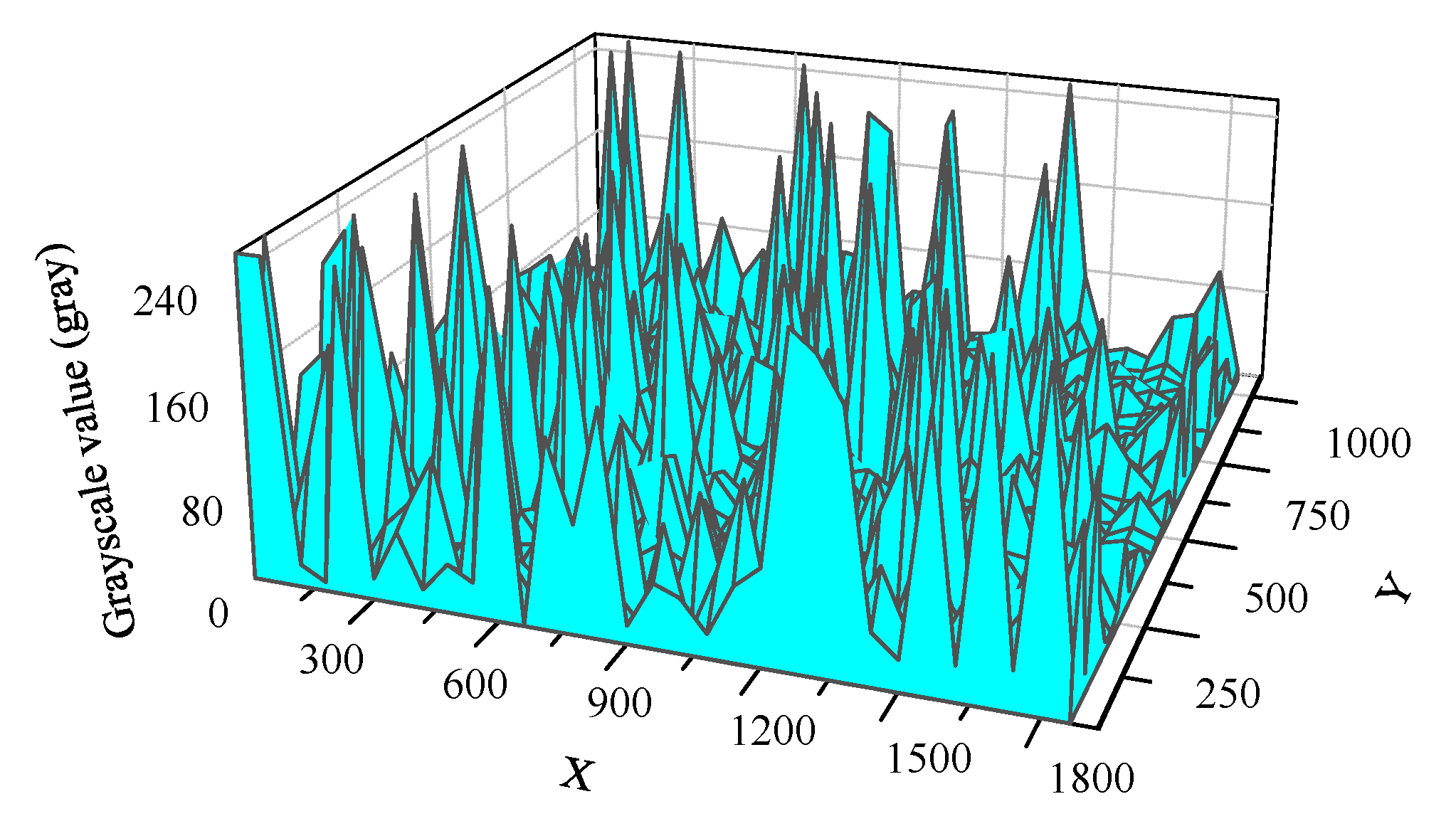

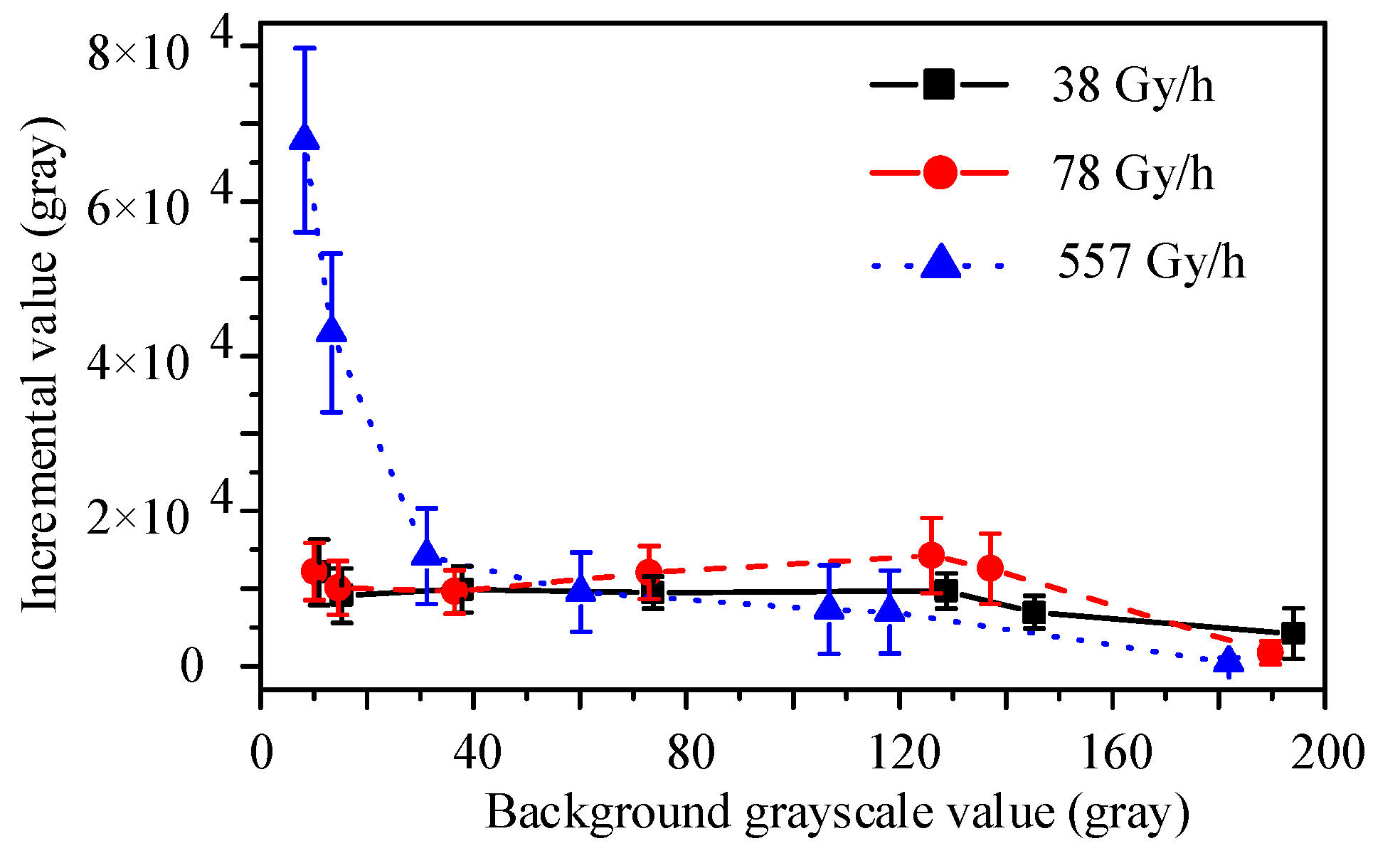
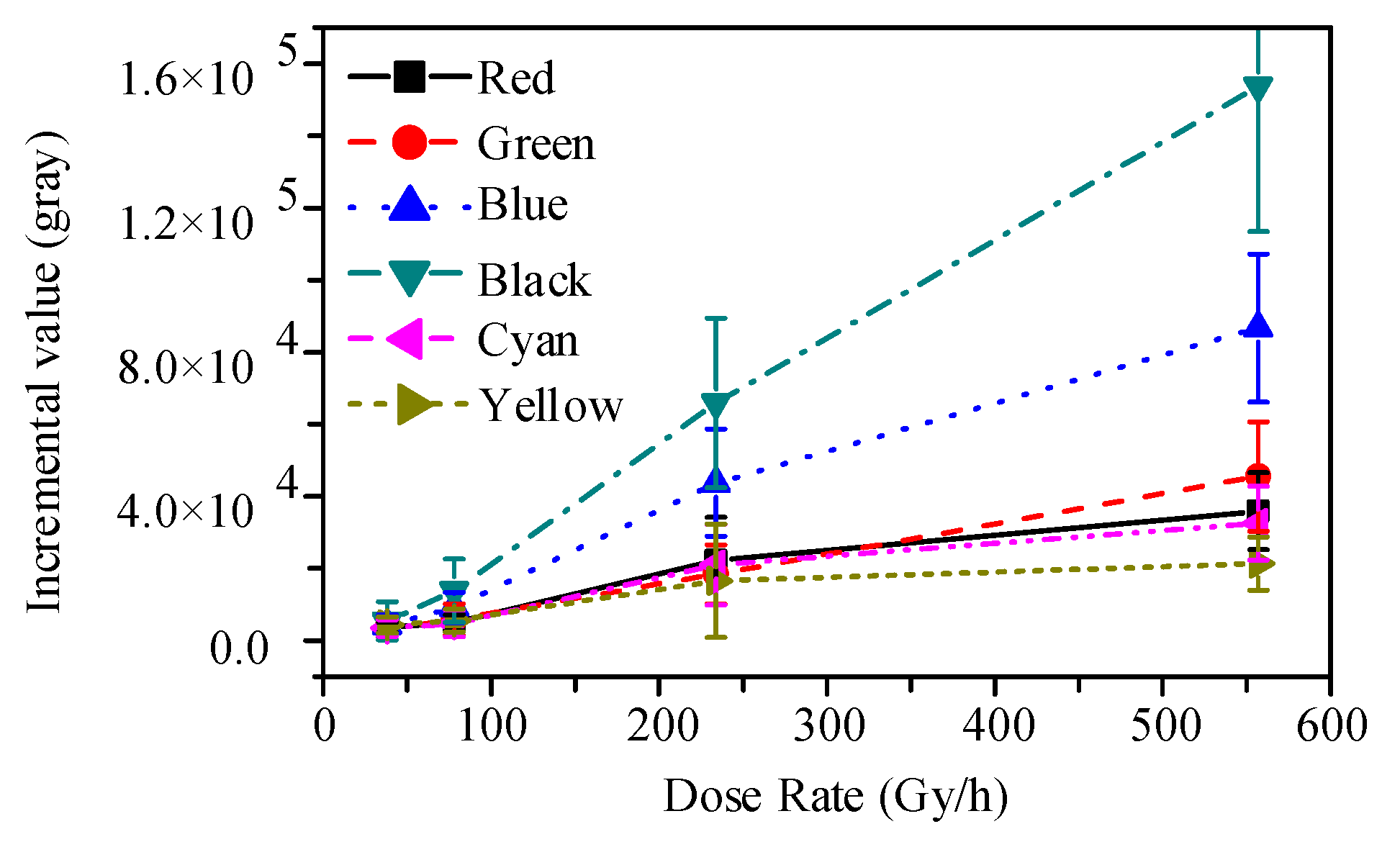
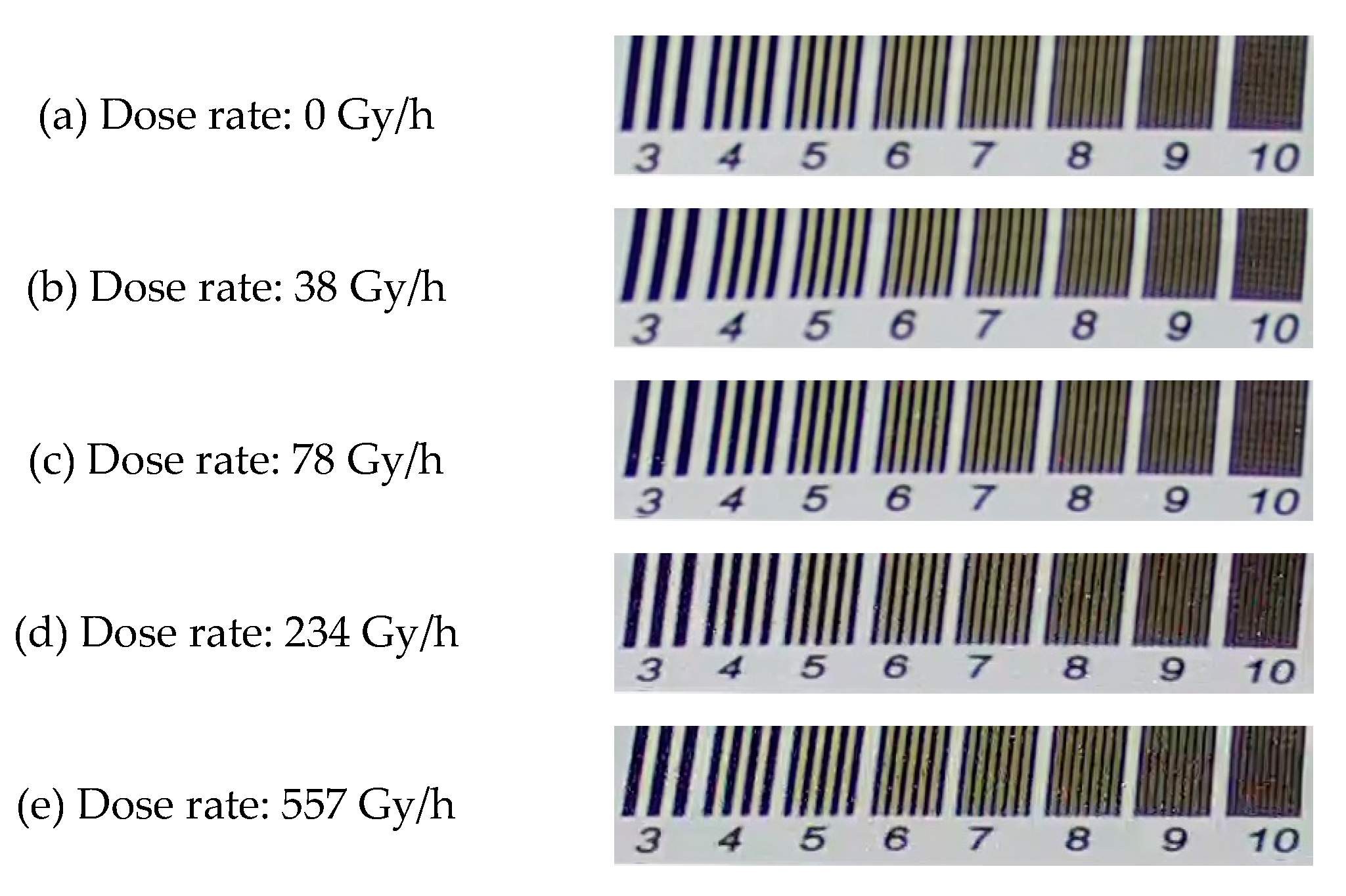
© 2019 by the authors. Licensee MDPI, Basel, Switzerland. This article is an open access article distributed under the terms and conditions of the Creative Commons Attribution (CC BY) license (http://creativecommons.org/licenses/by/4.0/).
Share and Cite
Xu, S.; Zou, S.; Han, Y.; Qu, Y.; Zhang, T. Video Monitoring Application of CMOS 4T-PPD-APS Under γ-ray Radiation. Sensors 2019, 19, 359. https://doi.org/10.3390/s19020359
Xu S, Zou S, Han Y, Qu Y, Zhang T. Video Monitoring Application of CMOS 4T-PPD-APS Under γ-ray Radiation. Sensors. 2019; 19(2):359. https://doi.org/10.3390/s19020359
Chicago/Turabian StyleXu, Shoulong, Shuliang Zou, Yongchao Han, Yantao Qu, and Taoyi Zhang. 2019. "Video Monitoring Application of CMOS 4T-PPD-APS Under γ-ray Radiation" Sensors 19, no. 2: 359. https://doi.org/10.3390/s19020359
APA StyleXu, S., Zou, S., Han, Y., Qu, Y., & Zhang, T. (2019). Video Monitoring Application of CMOS 4T-PPD-APS Under γ-ray Radiation. Sensors, 19(2), 359. https://doi.org/10.3390/s19020359




